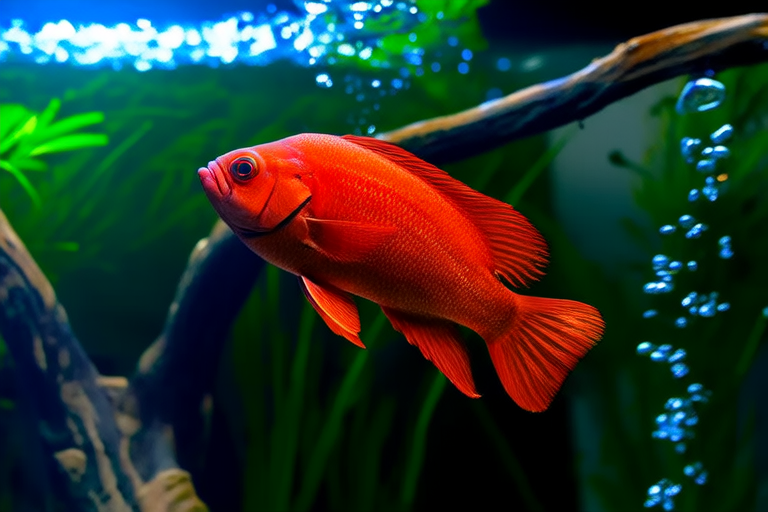
Caring for Your Pet Parrot Fish: Expert Tips and Tricks
Welcome to the vibrant world of pet parrot fish! These colorful and captivating creatures can bring joy and beauty to any home aquarium. Known for their bright hues and unique behaviors, parrot fish are a popular choice among aquarists. This article will guide you through setting up the perfect aquarium environment, feeding your parrot fish, maintaining their health, and understanding their behavior. Whether you’re a novice or an experienced aquarist, these expert tips and tricks will help you provide the best care for your pet parrot fish.
Introduction to Parrot Fish
Parrot fish, also known as red parrot cichlids, are freshwater fish that have gained immense popularity due to their stunning colors and fascinating behaviors. Originating from Southeast Asia, these fish are often found in rivers, lakes, and ponds. Their vibrant red, orange, yellow, and blue hues make them stand out in any aquarium. Parrot fish are also known for their playful nature and interesting interactions with their environment. They are intelligent and curious, making them a delight to watch.
Setting Up the Perfect Aquarium Environment
Water Quality
The first step in setting up your parrot fish’s home is ensuring excellent water quality. Parrot fish thrive in slightly alkaline water with a pH between 7.5 and 8.5. Regular testing of the water parameters is crucial to maintain optimal conditions. Use a reliable test kit to monitor pH levels, ammonia, nitrite, and nitrate concentrations. High levels of ammonia and nitrite can be toxic to your fish, so it’s essential to establish a stable nitrogen cycle before introducing your parrot fish.
Temperature
Parrot fish prefer water temperatures ranging from 76°F to 82°F (24°C to 28°C). A heater is necessary to maintain a consistent temperature, especially if your home’s ambient temperature fluctuates. Investing in a high-quality thermometer will help you keep track of the water temperature and ensure it stays within the desired range.
Tank Mates
Choosing the right tank mates is crucial for the well-being of your parrot fish. Parrot fish are generally peaceful but can become territorial when they reach adulthood. It’s best to house them with other similarly-sized, non-aggressive species that share similar water requirements. Some suitable tank mates include angelfish, discus, and other cichlids. Avoid housing parrot fish with smaller, more delicate species, as they may become prey or stressed by the parrot fish’s activity.
Feeding Your Parrot Fish
Nutrition
A balanced diet is essential for the health and longevity of your parrot fish. In the wild, parrot fish are omnivorous, feeding on algae, small crustaceans, and plant matter. In captivity, you can provide a varied diet consisting of high-quality flake foods, pellets, frozen or freeze-dried foods, and occasional live treats such as brine shrimp or bloodworms. Supplementing their diet with fresh vegetables like spinach or zucchini can also benefit their overall health.
Portion Control
Overfeeding can lead to obesity and poor water quality. Feed your parrot fish two to three times daily, offering only what they can consume within a few minutes. Remove any uneaten food promptly to prevent pollution of the aquarium.
Dietary Variety
Varying your parrot fish’s diet promotes better health and prevents boredom. Introduce new foods gradually to allow your fish to adapt to different flavors and textures. This practice can also help stimulate their natural foraging instincts.
Common Health Issues and Preventative Care
Signs of Illness
Early detection of health issues is crucial for effective treatment. Common signs of illness in parrot fish include loss of appetite, lethargy, abnormal swimming patterns, discolored patches, and excessive scratching against objects. If you notice any of these symptoms, isolate the affected fish and consult with a veterinarian specializing in exotic animals.
Preventative Care
To prevent illness, maintain a clean and stable environment, perform regular water changes, and quarantine new additions to the tank. Quarantine helps protect existing inhabitants from potential diseases brought in by new fish. Additionally, avoid overcrowding the tank, as this can stress the fish and increase the risk of disease transmission.
Maintaining Tank Cleanliness and Water Changes
Regular Maintenance
Maintaining a clean tank is vital for the health of your parrot fish. Perform weekly partial water changes, removing about 20% of the water and replacing it with fresh, conditioned water. This process helps dilute toxins and replenish essential minerals. During water changes, gently clean the substrate and decorations, being careful not to disturb the fish too much.
Filter Systems
Investing in a reliable filter system is key to maintaining water quality. Choose a filter that provides adequate flow and mechanical, biological, and chemical filtration. Regularly clean the filter media to ensure efficient operation and replace carbon pads or other consumable components as needed.
Bonding with Your Parrot Fish and Understanding Their Behavior
Building a bond with your parrot fish can enhance their well-being and provide you with a rewarding experience. Spend time observing their behaviors, such as swimming patterns, feeding habits, and interactions with tank mates. Parrot fish can become accustomed to their owners’ presence and may even respond to gentle tapping on the glass or verbal cues.
Understanding your parrot fish’s behavior allows you to anticipate their needs and address any concerns promptly. For example, if your fish becomes more reclusive or shows signs of aggression, it might indicate stress or discomfort in its environment. By addressing these issues early, you can help ensure a happy and healthy life for your pet parrot fish.
In conclusion, caring for a pet parrot fish requires attention to detail and a commitment to providing a nurturing environment. By following these expert tips and tricks, you’ll be well-equipped to offer the best possible care for your colorful companion. Enjoy the journey of watching your parrot fish grow and thrive in their aquatic home.



